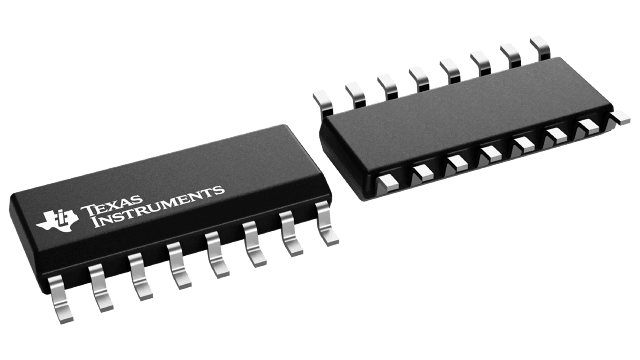Packaging information
| Package | Pins SOIC (D) | 16 |
| Operating temperature range (°C) 0 to 70 |
| Package qty | Carrier 40 | TUBE |
Features for the BQ2050H
- Accurate measurement of available capacity in Lithium Ion batteries
- Provides a low-cost battery management solution for pack integration
- Complete circuit can fit in as little as 1/2 square inch of PCB
- Low operating current (120µA typical)
- Less than 100nA of data retention current
- High-speed (5kb) single-wire communication interface (HDQ
bus) for critical battery parameters - Monitors and controls charge FET in Li-Ion pack protection circuit
- Direct drive of remaining capacity LEDs
- Measurements automatically compensated for rate and temperature
- 16-pin narrow SOIC
Description for the BQ2050H
The bq2050H Lithium Ion Power Gauge™ IC is intended for battery pack or in-system installation to maintain an accurate record of available battery capacity. The IC monitors a voltage drop across a sense resistor connected in series between the negative battery terminal and ground to determine charge and discharge activity of the battery. Compensations for battery temperature, self discharge, and rate of discharge are applied to the charge counter to provide available capacity information across a wide range of operating conditions. Battery capacity is automatically recalibrated, or "learned," in the course of a discharge cycle from full to empty.
Nominal available capacity may be directly indicated using a fivesegment LED display. These segments are used to graphically indicate available capacity. The bq2050H also supports a simple single-line bidirectional serial link to an external processor (common ground). The 5kb HDQ bus interface reduces communications overhead in the external microcontroller.
Internal registers include available capacity, temperature, scaled available energy, battery ID, battery status, and Li-Ion charge FET status. The external processor may also overwrite some of the bq2050H power gauge data registers.
The bq2050H can operate from the batteries in the pack. The REF output and an external transistor allow a simple, inexpensive voltage regulator to supply power to the circuit from the cells.
